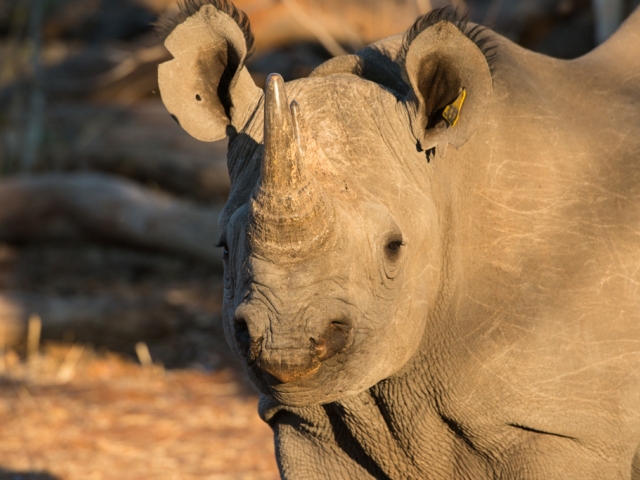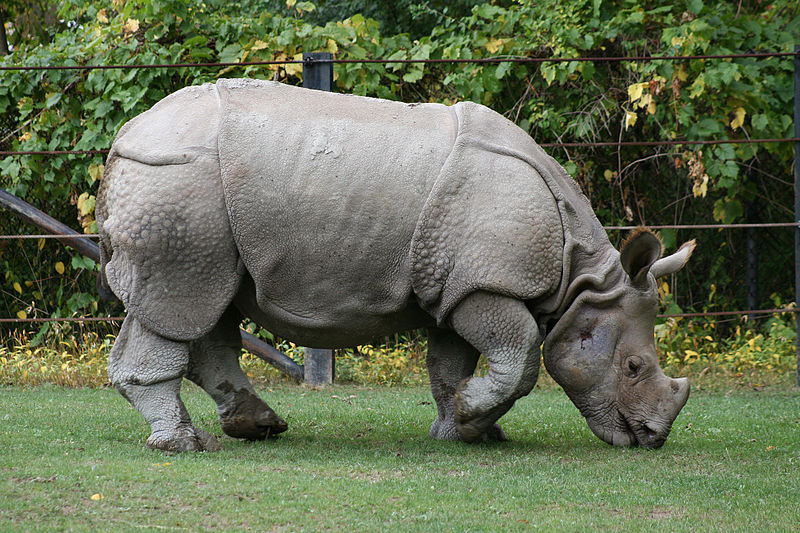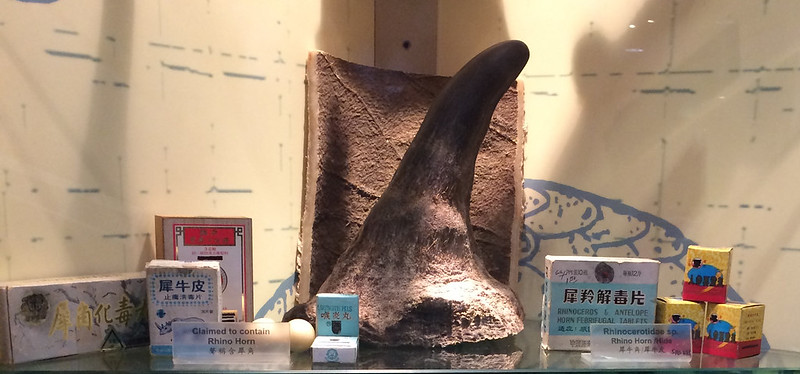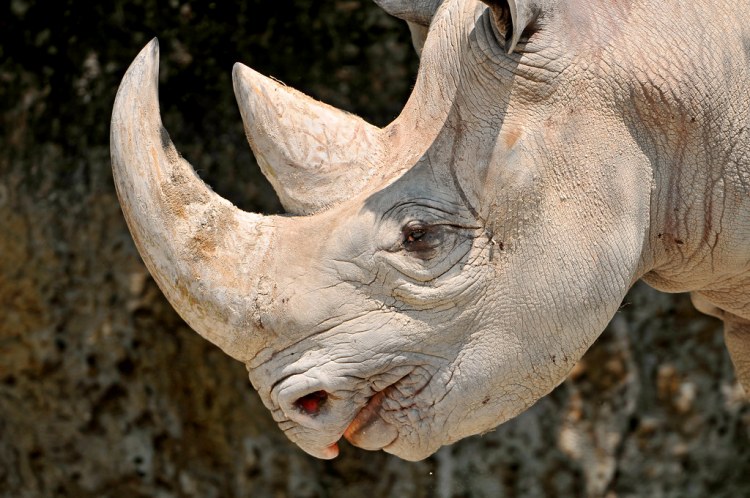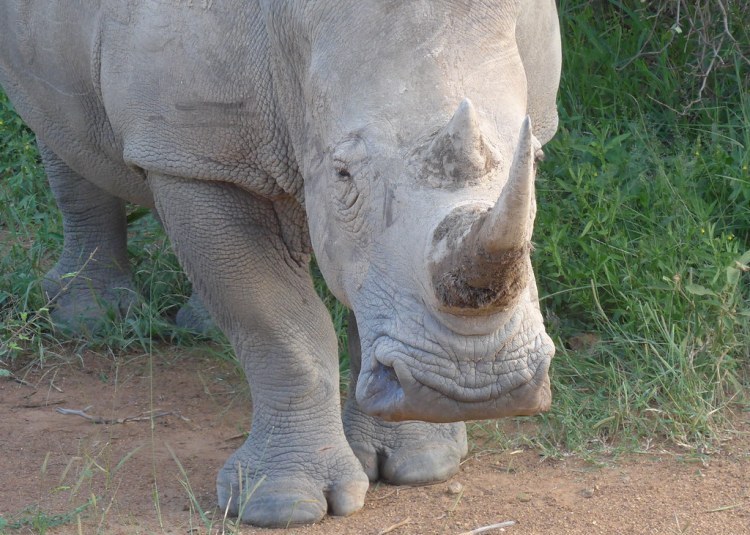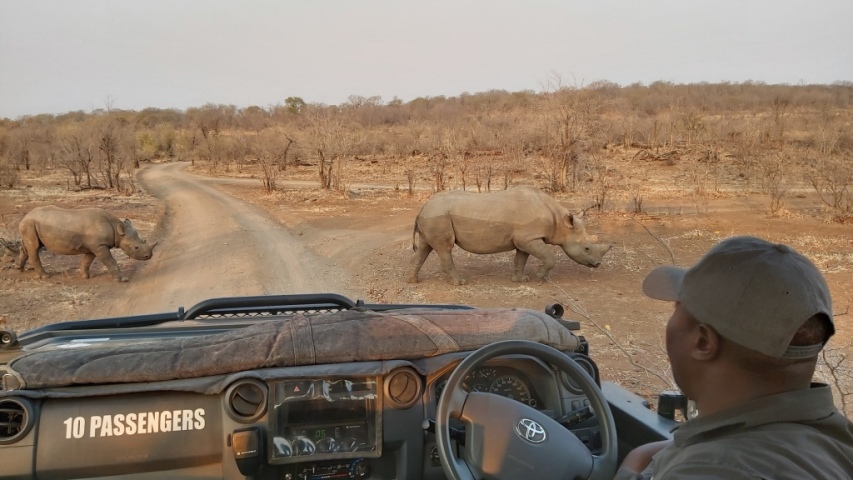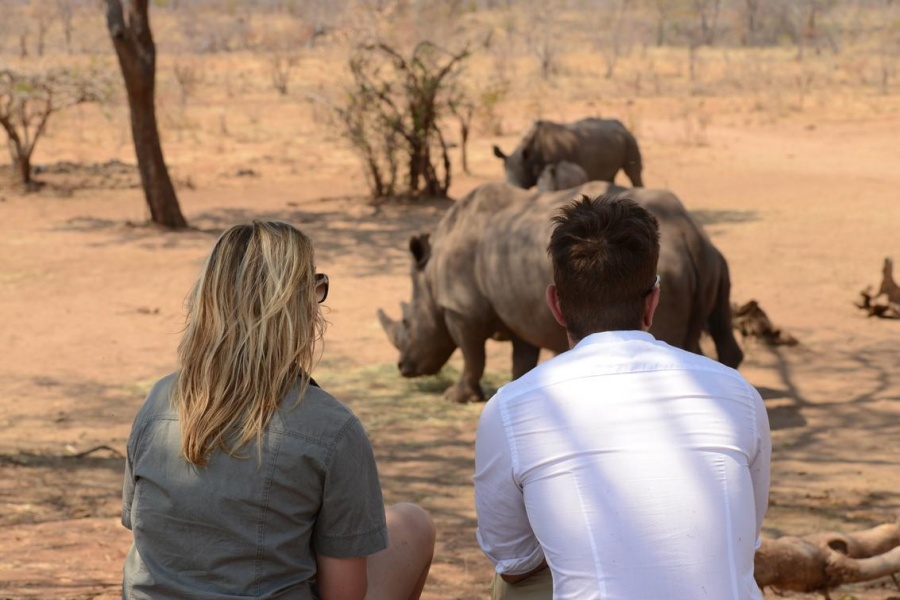African RhinoThe African rhino is the world's second largest land mammal, and one of the most significant ancient creatures
There are two species of rhino in Southern Africa- namely the White Rhino and the Black Rhino. These names are now thought of as old fashioned and the newer alternative names of Square-lipped Rhino and Hook-lipped Rhino respectively, are preferred.
African rhino Quick FactsLatin name: White Rhino - Ceratotherium simum; Black Rhino - Diceros bicornis Rhinos of the WorldThere are five species of Rhino in the world and various subspecies. Three of these five species are found in Asia. The Javan Rhino is 'critically endangered' and considered to be one of the rarest large mammals on earth, with only 72 individuals remaining. The Sumatran Rhino follows close behind at 100 individuals. Due to successful conservation management of the third species in Asia, it is now classified as 'Vulnerable'. This is the Greater One Horned or Indian Rhino, which is the largest Rhino species. Its population is now sitting at 3 550, from only about 200 individuals in 1900.
Indian Rhino In Africa, the two species are Black Rhino and White Rhino. Although both species have been poached relentlessly, conservation efforts and anti-poaching units have brought the White Rhino back from the brink of extinction. They are now considered 'Near-threatened', with 20000 individuals throughout Africa, they are definitely not out of danger yet. The Black Rhino populations have always been smaller due to their preferred habitat (thickets), but took a massive drop of roughly 96% between 1970 and 1990. Their population is now around 6000. For the latest statics please visit the World Animal Foundation's website Why Are Rhino Being Poached?Poaching and illegal trade in rhino horn took a sharp upturn in 2007, this along with habitat loss is the reason rhino are still endangered. With rhino horn being more valuable than its weight in gold, poaching is a huge business. Anti-poaching units often need military training, as well as helicopters, night vision and canine units. Powdered rhino horn is used in traditional Asian medicine as a supposed cure for a range of illnesses, from hangovers to fevers and even cancer.
Use of rhino horn in Asian medicine The recent surge of poaching has been mainly driven by the demand from upper-middle class citizens in Vietnam. As well as its use in medicine, rhino horn is bought and consumed purely as a symbol of wealth. Being made from keratin, rhino horn is not much different to human fingernails. And like our nails will grow throughout their lifetime as well as re-growing after being cut back.. The reason the horns would be cut back is to dissuade poachers from killing them. Unfortunately, this doesn’t always work as a small stump is left in the nose, which still holds value to poachers. How Did The White And Black Rhino Get Their Names?Although you would think it sounds obvious there is actually no colour difference between the two species. They are both a dull grey colour, that blends in surprisingly well to both species differing habitats. Early Afrikaans settlers called the White Rhino 'Weit' from the Afrikaans word which means wide, referring to their wide lips adapted for grazing. Over time this was lost in translation and they became incorrectly named White Rhino, this is why it also more accurately known today as the Square-lipped Rhino. Black Rhino were merely named black to differentiate them from the White Rhino. Difference Between a White Rhino and a Black Rhino?White and Black rhino are both found in Africa, often in the game reserves but in different habitats. White rhinos are grazers (only eat grass) and live on the open savannahs. Black rhino are browsers (only eat leaves) and live in heavily wooded areas. If you think about the adaptation to their preferred diets, white rhino have a wide lip acting like a big lawnmower they can take up as much food as possible with one mouthful. Black rhino, on the other hand, have thin hooked prehensile lips to be able to pick the leaves from between branches and thorns.
Hook-lipped black rhino
Square-lipped white rhino Black rhino hold the reputation of being more aggressive and dangerous, living in thick bush they often feel that the best form of defence is attack. White rhino are often very relaxed creatures, possibly their confidence comes from their size and the fact that they have no natural predators. White rhinoceros are the second largest land mammal in Africa, after the elephant. A large male tipping the scales at 2.4 tonnes, roughly the weight of one and a half family sedan cars. What Are Rhino Senses Like?Rhino have fairly poor eyesight, not being able to pick out shapes or colours very well, however, their eyes are honed into movement. They will be able to pick out a human walking past fairly easily, but if you stand still or better crouch down, they will lose sight of you. This is where their keen sense of smell works for them, being able to pick out scents far beyond human range, they will also often circle downwind to make sure that wind is not blowing the scent away from them. They have incredibly sensitive hearing, interestingly each ear can move independently listening for small noises coming from different directions. Are African Rhino Found in Victoria Falls?Victoria Falls is one of the few destinations where it is possible to see African Rhinos. The rhinos are found on protected reserves, guarded heavily by anti-poaching patrols, in order to keep them safe. Specially organised game drives and game walks offer you the opportunity to see these magnificent animals in their natural environment. Please contact us if you want to arrange one of these tours.
Game drive in search for African rhino In Zimbabwe, in the Victoria Falls Private Game Reserve, you can find the Black Rhino whilst on a game drive. These elusive animals are not always spotted, but there is still a very good chance of seeing them. In Zambia, in the Mosi-oa-Tunya National Park, you can find the White Rhino. As this species is less aggressive, guides will take you on a guided walk to see these enormous animals.
Up close encounter on a walking safari
|
|
||
|
|
|||
|
|
|||
|
| |||
